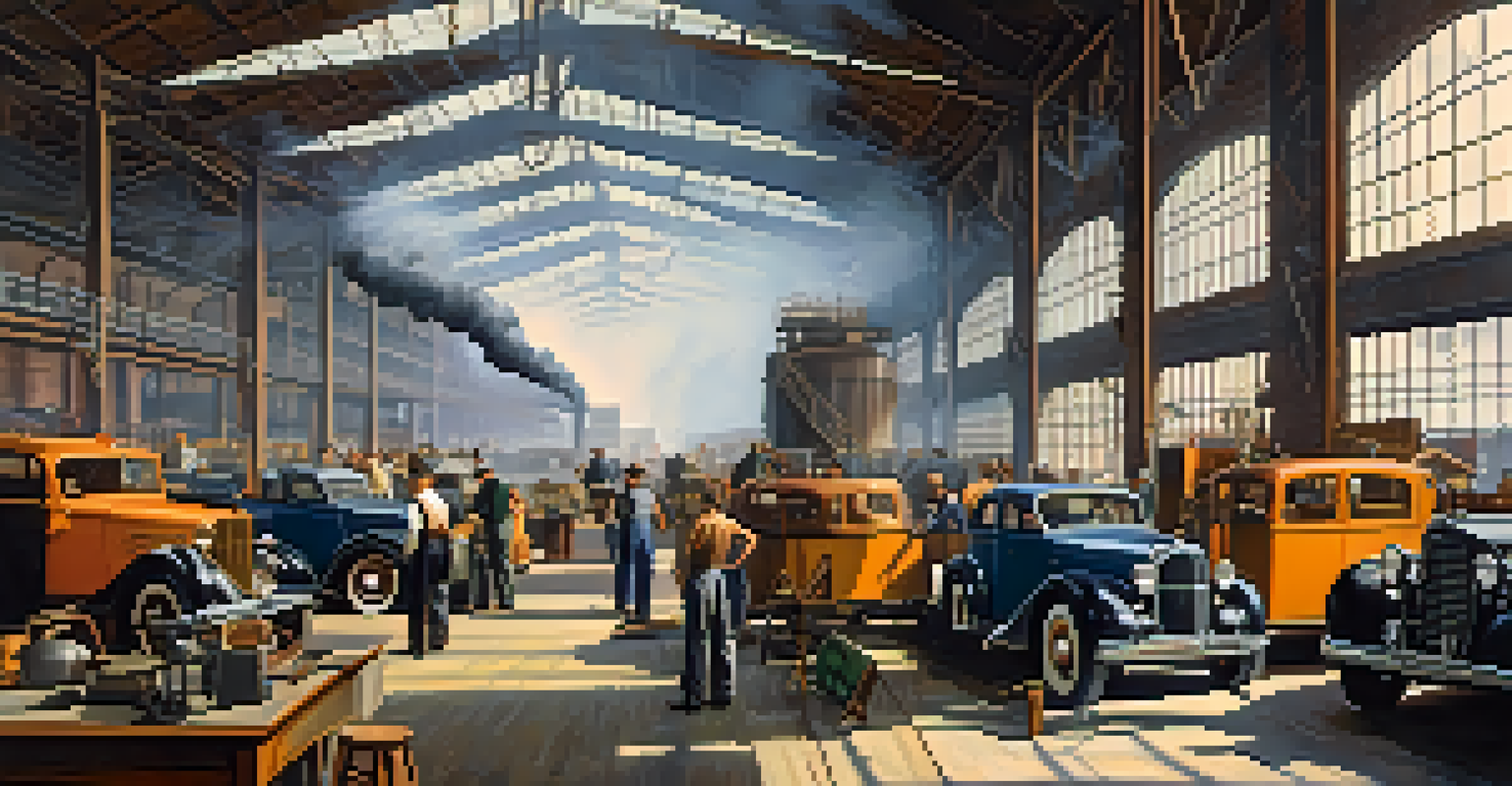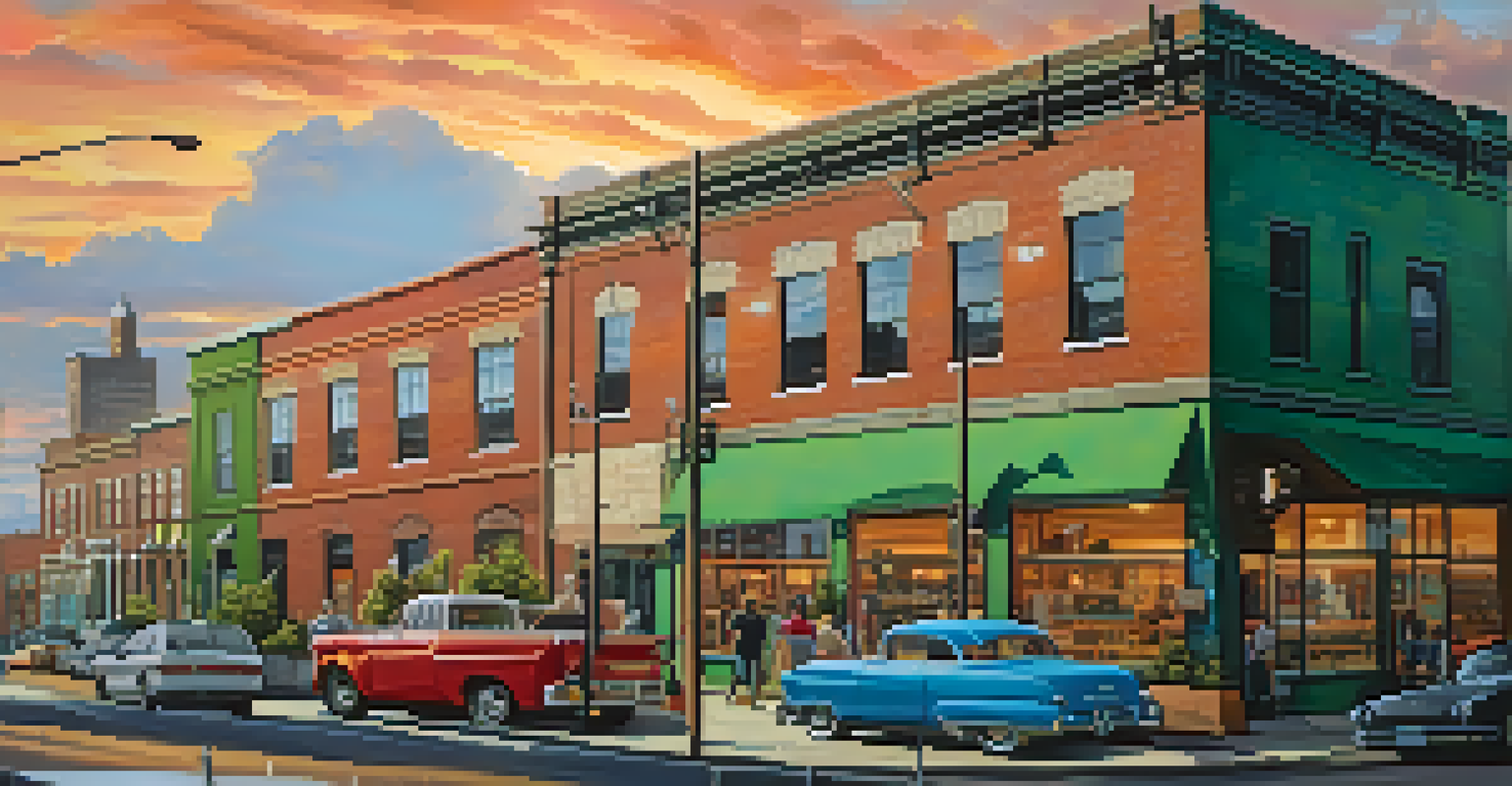The Economic Evolution: New Jersey from Farms to Factories

New Jersey’s Agricultural Beginnings: A Fertile Landscape
In the early days, New Jersey was primarily an agricultural state, known for its rich soil and favorable climate. Farms dotted the landscape, producing a variety of crops including corn, wheat, and fruits. This agricultural abundance not only fed local communities but also contributed to trade, establishing New Jersey as a vital hub for food supply in the region.
The future belongs to those who prepare for it today.
The farming lifestyle was deeply rooted in the culture of New Jersey, with families often passing down their land and farming techniques through generations. This connection to the land fostered a strong sense of community and self-sufficiency. Local markets thrived, and farmers collaborated with one another to ensure a steady flow of goods, which bolstered the state’s economy during its formative years.
However, as the nation grew and urbanization began to take hold, the agricultural landscape of New Jersey began to shift. The promise of better job opportunities and higher wages in cities drew families away from their farms, setting the stage for a major economic transformation.
The Industrial Revolution: A Turning Point for New Jersey
The Industrial Revolution marked a significant turning point for New Jersey, as factories began to sprout up, replacing vast stretches of farmland. This shift was fueled by advancements in technology and transportation, particularly the expansion of railroads which made it easier to ship goods. Towns that were once quiet agricultural hubs rapidly transformed into bustling industrial centers.

Industries such as textiles, pottery, and machinery flourished during this period, attracting a workforce eager for employment. Immigrants from various parts of the world arrived in droves, bringing diverse cultures and skills that enriched the state’s social fabric. The rise of factories not only altered the job landscape but also introduced new social dynamics, as workers rallied for better wages and working conditions.
Agriculture to Industry Transition
New Jersey evolved from a primarily agricultural state to an industrial powerhouse, driven by urbanization and technological advancements.
As factories became the heart of New Jersey’s economy, the state became a microcosm of the broader industrial growth happening across America. This transition wasn't without its challenges, as many workers faced long hours and dangerous conditions, igniting labor movements that sought to bring about change.
The Rise of Manufacturing: New Jersey’s Economic Powerhouse
By the late 19th and early 20th centuries, New Jersey had firmly established itself as a manufacturing powerhouse. Cities like Paterson and Newark became renowned for their production capabilities, specializing in everything from textiles to pharmaceuticals. The state’s strategic location, nestled between major urban centers like New York and Philadelphia, further cemented its importance in the manufacturing sector.
Change is the law of life. And those who look only to the past or present are certain to miss the future.
As innovations continued to emerge, so did New Jersey’s reputation for quality and efficiency in production. Companies began to invest heavily in research and development, leading to groundbreaking inventions and processes that would shape the future of manufacturing. This period of growth not only boosted the economy but also provided a wealth of job opportunities for residents.
However, this rapid industrialization also led to environmental challenges, as factories produced waste and pollution. Balancing economic growth with environmental stewardship became an emerging concern for communities across the state, prompting early discussions on sustainable practices.
World War II: A Catalyst for Industrial Growth
World War II served as a major catalyst for industrial growth in New Jersey, as the demand for war materials skyrocketed. Factories that once produced consumer goods pivoted to support the war effort, manufacturing everything from aircraft to munitions. This transformation not only bolstered the state’s economy but also played a crucial role in the Allied victory.
The war brought about a surge in job opportunities, drawing even more people to New Jersey. Women entered the workforce in unprecedented numbers, taking on roles that had previously been reserved for men. This shift not only changed the dynamics of the workforce but also laid the groundwork for future movements advocating for gender equality in employment.
Post-War Economic Diversification
After World War II, New Jersey's economy diversified beyond manufacturing, embracing technology, pharmaceuticals, and services.
Post-war, many factories continued to thrive, shifting back to consumer goods while retaining the technological advancements made during the war. New Jersey’s industrial base had diversified, setting the stage for a robust economy that would be crucial in the decades to come.
Post-War Economic Boom: Diversification and Growth
The post-war era ushered in an economic boom for New Jersey, characterized by diversification and growth across various sectors. While manufacturing remained a cornerstone, the state began to see a rise in services, technology, and pharmaceuticals. This diversification not only strengthened the economy but also provided a buffer against economic downturns.
Firms like Bell Labs and Johnson & Johnson, which emerged during this time, showcased New Jersey’s shift toward innovation and high-tech industries. The state became a hub for research and development, attracting talent and investment from across the globe. This focus on innovation ensured that New Jersey remained competitive in an ever-evolving economic landscape.
However, this transition also posed challenges for traditional manufacturing sectors as they faced increased competition and the need to modernize. Many factories had to adapt to new technologies, leading to a complex interplay between preserving jobs and embracing innovation.
Challenges of the Late 20th Century: Manufacturing Decline
As the late 20th century approached, New Jersey’s manufacturing sector began to face significant challenges. Globalization and the rise of cheaper labor markets led many companies to outsource production overseas, resulting in factory closures and job losses. This shift not only impacted the economy but also left communities grappling with the loss of their industrial identity.
The decline of manufacturing jobs created a ripple effect throughout the state, leading to increased unemployment and economic uncertainty for many families. Communities that once thrived on factory work found themselves searching for new economic opportunities, prompting a shift in focus toward service-oriented industries.
Resilience Amid Manufacturing Decline
Despite facing challenges from globalization and manufacturing decline, New Jersey has shown resilience by fostering innovation and revitalizing urban areas.
Despite these challenges, New Jersey’s resilience shone through as local leaders and entrepreneurs began to explore new avenues for growth. Initiatives aimed at revitalizing urban areas and attracting investment in technology and services emerged, signaling a new chapter in the state’s economic evolution.
New Jersey Today: Balancing Industry and Innovation
Today, New Jersey stands as a testament to the evolution of its economy, successfully blending its industrial roots with innovation. The state is home to a thriving pharmaceutical and biotech industry, with companies continuously pushing the boundaries of research and development. This focus on innovation not only drives economic growth but also positions New Jersey as a leader in healthcare and technology.
However, the legacy of manufacturing still lingers, with many towns working to reclaim their industrial heritage. Efforts to transform old factories into modern spaces for startups and creative industries illustrate a commitment to repurposing the past for a sustainable future. This blend of old and new reflects the adaptability that has defined New Jersey throughout its history.

As the state navigates the complexities of a global economy, it remains focused on fostering innovation, supporting local businesses, and ensuring that its workforce is equipped for the jobs of tomorrow. The journey from farms to factories has not only shaped New Jersey's economic landscape but has also instilled a spirit of resilience and adaptability that continues to thrive.